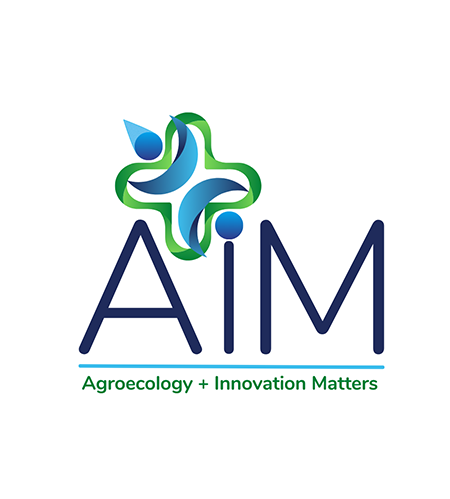When she’s not helping farmers as a Conservation Planner in Rock Island County, Leticia Taliafero spends her time working on her own certified organic operation, Sowing Seed Urban Garden Center, where she specializes in microgreens that are sold at her local farmers market. Growing up in central Virginia, her family always had a vegetable garden. With a laugh, she said that hardly any cucumbers made it into the house unless her mom was pickling, which she did once per year. The rest of the vegetables were consumed fresh. While she was looking for somewhere to settle down, space for a garden was a priority to her. Eventually she found a place where she could build a high tunnel, which was funded through EQIP. She and her husband built the structure themselves and regularly grow tomatoes inside of it.
She had several different careers before becoming a Conservation Planner, including
military service in the Navy, where she wore many different hats, including air traff ic control
and supportive equipment mechanic. She completed 8 years of service in New Orleans and 3.5 years in Pennsylvania. After sustaining injuries during their military service, she and her husband were placed on anti-inflammatory diets, which is what piqued her interest in growing their own food. She said, “I was really studying hard on what is in our food… why is our food not as nutritious as it used to be? And that takes you down the whole rabbit hole of how we need to work on our soil and make sure our soil has the minerals and vitamins that are needed to produce food that is healthy to eat.”
Explaining how she began specializing in microgreens, she said, “ The farmers market opens in May, and you don’t have much else to sell in May. So, I took two trays of microgreens the first day, and we sold out in two hours.” This will be their eighth year at the farmers market and sixth year being certified organic. She was a fulltime producer prior to joining the
Conservation Capacity Building Initiative.
Discussing her collaboration with colleagues, Leticia said she mostly works with Soil Conservationists. She recently assisted a with a grazing plan after completing a grazing management class with Soil Conservationists in her district. Describing the complexity of a grazing plan, she said, “It’s like a bunch of small puzzles that go into a larger puzzle. So there’s the regular planning that needs to be done to figure out how many cows you
can graze on this piece of land and how many paddocks are needed for it to sustain the cows, how will they get watered, how far do they need to walk to get the water, what are we going to plant for the cows to eat, how many months is that going to sustain the cows, what are they going to eat in the months that you don’t have grass, where is that going to go, where are the cows going go in the winter, all of the fencing involved to fence the outside perimeter, all of these small little paddocks.”
According to Soil Conservationist Jodi Martin, grazing has become increasingly popular in their district with a lot of smaller farms wanting to implement it recently. She said, “Grazing seems to be a pretty hot topic around here. We have a lot of landowners that are wanting to get into grazing, whether it be with sheep or goats.” She said they have also worked on grazing plans for horses, cattle and alpaca.
Jodi Martin has worked with Leticia on several different projects. She said, “It’s very beneficial having her as a planner… you know, when we need plans written, she knows what to
do. She can go in and write the plan, do the job sheet. She’s had all the necessary training. It’s probably easier for the client, because then he doesn’t have to continue to wait for somebody else to sign his plan or do everything else that she does do. I think the more planners we have on staff, the better off we are.”
Along with their local SWCDs, they also work with Pheasants Forever and National Great
Rivers Research and Education Center (NGRREC). Jodi said, “People are really willing to
just get in there and help and do whatever needs to be done. I like having the variety
of different groups that we work with because somebody might think of something that somebody else did not. Everybody’s got ideas, and you can piggyback off those.”
According to Leticia, the farmers in her district have been very friendly and welcoming. Although she was initially nervous about doing her f rst CRP visits alone, she was pleasantly surprised to find that some farmers even offered to give her full tours of their land. When speaking with farmers, she believes it is important to always be clear about any potential risks involved with implementing a particular practice. She said, “Just try to be more transparent about what the risks are and understanding their hesitations and objections and be able to comprehend that information.” Along with continuing to connect farmers to resources, this year Leticia plans to make some upgrades to her own high tunnel, where she’s planning to grow tomatoes as well as watermelons.
This article original ran in the March 2025 Newsletter. Click here to read the newsletter in full.

